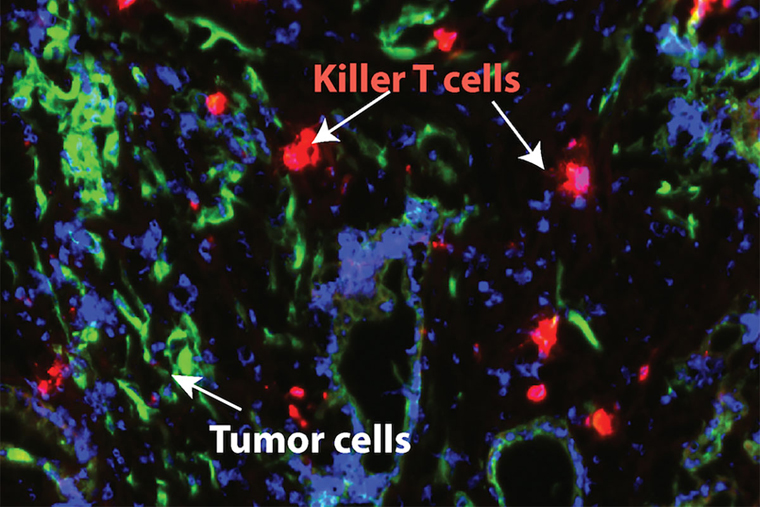2022-03-09 プリンストン大学
<関連資料>
- https://www.psu.edu/news/research/story/researchers-uncover-genetic-bridge-leukemia-progression/
- https://www.cell.com/molecular-cell/fulltext/S1097-2765(22)00057-0
HOTTIP依存的Rループ形成は白血病におけるCTCF境界活性とTADの完全性を制御するHOTTIP-dependent R-loop formation regulates CTCF boundary activity and TAD integrity in leukemia
Huacheng Luo、Ganqian Zhu、Melanie A. Eshelman、Yi Qiu、Mingjiang Xu、Suming Huang、・・
Open AccessDOI:https://doi.org/10.1016/j.molcel.2022.01.014
Highlights
-
OTTIP recruits CTCF/cohesin and R-loop regulators to form R-loops at TAD boundaries
-
-loops reinforce HOTTIP-associated CTCF boundaries and facilitate TAD formation
-
-loop-dependent CTCF boundaries coordinate oncogenic Wnt pathway in AML
-
oss of HOTTIP-driven R-loops impairs TAD topology, leading to mitigating AML severity
Summary
Graphical abstract


For cells to thrive, a complex network of three-dimensional structures assembles to read, copy and produce the genetic materials (DNA) needed for cellular function. Understanding how these structures form, and what happens when things go wrong, is an everyday endeavor for researchers at Penn State College of Medicine and Penn State Cancer Institute.
In the lab of Four Diamonds Epigenetics Program researcher Suming Huang, professor of pediatrics, a team of scientists is studying how certain hard‐to‐treat subtypes of acute myeloid leukemia (AML) develop as a result of alterations in cellular genome structures, called topologically associated domains (TADs). Huang is investigating how long noncoding ribonucleic acid (lncRNA) affects the function of the human genome building block, called CCCTC-binding factor (CTCF), in the formation of these topological structures. According to his latest study, which was published in Molecular Cell, a lncRNA called HOTTIP plays a key role in the formation of R-loops with DNA strands, which maintain the structural integrity needed for downstream biological processes that allow leukemia to develop and progress.
“Imagine a suspension bridge,” said Huang, a Cancer Institute researcher. “The bridge itself is the TAD that allows access to the production line for a molecule called beta-catenin, which prior research has shown allows leukemia cells to develop. The bridge is assembled and supported by the towers (CTCF) and cables (HOTTIP) and the cables are anchored in place by the R-loops. Our lab demonstrated that R-loop formation is facilitated by HOTTIP.”
To arrive at their conclusion, the researchers conducted experiments with mice implanted with AML cells. Some mice received genetically altered AML cells unable to form R-loops in the TAD encompassing beta-catenin region, whereas another set had AML cells that were able to form R-loops in this region. On average, the mice with the cells that couldn’t form R-loops had a longer period of survival, which demonstrated to the team that R-loops do play a key role in leukemia development.
“Without the ‘anchors’, the genetic ‘bridge’ cannot form,” Huang said. “Understanding how genome structure contributes to leukemia development might someday allow us to identify therapeutic targets and develop next‐generation therapies.”
Huacheng Luo, Melanie Eshelman, Qian Lai, Julia Lesperance, Xiaoyan Ma, Nicholas Cesari and Yi Qiu of Penn State College of Medicine; Ganqian Zhu, Shi Chen, Feng-Chun Yang and Mingjiang Xu of University of Texas Health Science Center; Tsz Kan Fung, Bernd Zeisig and Chi Wai Eric So of King’s College London; Fei Wang and Baoan Chen of Southeast University Medical School; Christopher Cogle of University of Florida College of Medicine; and Bing Xu of The First Affiliated Hospital of Xiamen University also contributed to this research. The authors declare no conflicts of interest.
This research was supported by grants from the National Institutes of Health, a CRUK program grant, a Blood Cancer UK program continuity grant, a Cancer Prevention/Research Institute of Texas grant and Four Diamonds. The content is solely the responsibility of the authors and does not necessarily represent the official views of the NIH or other funders.


